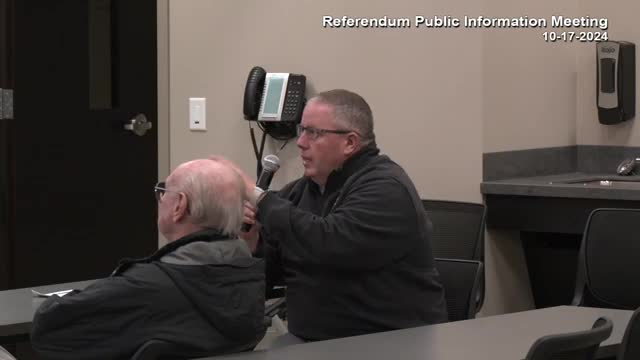City faces staffing crisis as referendum seeks urgent funding
October 18, 2024 | Fitchburg, Dane County, Wisconsin
This article was created by AI summarizing key points discussed. AI makes mistakes, so for full details and context, please refer to the video of the full meeting. Please report any errors so we can fix them. Report an error »

During a recent government meeting, city officials discussed staffing needs and funding challenges, highlighting the pressing demand for additional positions within various departments. Currently, the city has 15 positions, with a projected need for up to 50 more over the next five years. However, officials expressed skepticism about the feasibility of adding these positions in the near term, citing financial constraints and the limitations imposed by the levy limit.
The focus of the upcoming referendum will be on 14 high-priority positions, with an acknowledgment that an additional 35 positions identified by department heads are unlikely to receive funding unless there is a significant increase in net new construction, estimated at 5-6% annually. Historically, the city has managed to add only 1 to 2 positions per year, and the current financial landscape suggests that maintaining existing services will take precedence over expanding staff capacity.
Officials noted that the city may need to return for another referendum in 3 to 5 years to address ongoing staffing shortages. The council debated whether to request funding for a longer-term solution, ultimately deciding against it to avoid overburdening taxpayers with unnecessary levies.
The discussion also touched on the impact of state funding, with officials urging local representatives to advocate for a share of the state's substantial surplus, which could alleviate some financial pressures. The current staffing levels in critical areas, such as police and fire departments, were highlighted, with the police department operating below the standard ratio of officers per population, which could affect response times.
In the fire department, staffing challenges were evident, with a reliance on a mix of full-time and part-time personnel. The need for additional full-time staff was emphasized to ensure adequate coverage and response capabilities, particularly as the number of volunteers has declined over the years.
Overall, the meeting underscored the city's struggle to balance staffing needs with fiscal responsibility, as officials navigate the complexities of funding and service delivery in the face of growing demands.
The focus of the upcoming referendum will be on 14 high-priority positions, with an acknowledgment that an additional 35 positions identified by department heads are unlikely to receive funding unless there is a significant increase in net new construction, estimated at 5-6% annually. Historically, the city has managed to add only 1 to 2 positions per year, and the current financial landscape suggests that maintaining existing services will take precedence over expanding staff capacity.
Officials noted that the city may need to return for another referendum in 3 to 5 years to address ongoing staffing shortages. The council debated whether to request funding for a longer-term solution, ultimately deciding against it to avoid overburdening taxpayers with unnecessary levies.
The discussion also touched on the impact of state funding, with officials urging local representatives to advocate for a share of the state's substantial surplus, which could alleviate some financial pressures. The current staffing levels in critical areas, such as police and fire departments, were highlighted, with the police department operating below the standard ratio of officers per population, which could affect response times.
In the fire department, staffing challenges were evident, with a reliance on a mix of full-time and part-time personnel. The need for additional full-time staff was emphasized to ensure adequate coverage and response capabilities, particularly as the number of volunteers has declined over the years.
Overall, the meeting underscored the city's struggle to balance staffing needs with fiscal responsibility, as officials navigate the complexities of funding and service delivery in the face of growing demands.
View full meeting
This article is based on a recent meeting—watch the full video and explore the complete transcript for deeper insights into the discussion.
View full meeting
